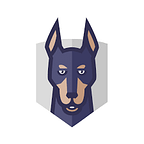Top 3 Kubernetes monitoring tools
Kubernetes is a production-ready, open source platform designed with Google’s accumulated experience in container orchestration. It combines best-of-breed ideas from the community with Google’s own technology to make it easy for you to deploy, scale and operate application containers.
In a Kubernetes environment, applications are distributed across multiple nodes within a cluster, and application services can be distributed across multiple clusters and multiple clouds. Monitoring utilities have to handle more services and server instances than ever before. Although infrastructure landscape has changed, operations teams still need to monitor the same metrics on CPU, RAM, File System, Network utilization and the availability of service endpoints. In this post we look at some of the monitoring tools available for Kubernetes
1. Prometheus and Grafana
Prometheus is one of the most popular open-source monitoring tools for Kubernetes, created by SoundCloud. It’s primarily written in Go and is designed to collect metrics from applications running on the cluster.
Prometheus has a number of features that make it a standout:
- It uses a multidimensional data model to store all of its metrics data.
- The system has its own query language, PromQL, which lets you query time series data in real time.
- It uses a pull model over HTTP to collect time series metrics data.
- It uses a feature called the Pushgateway that lets you push time series metrics data to it in cases where scraping or pulling data is not possible..
It’s a great option if collecting time series data is a requirement for your organization, and it’s well suited for monitoring nodes alongside service-oriented architectures. You need to install a exporter to collect data, and it leverages a component called AlertManager, which manages alerts and sends notifications via email, on-call systems, and/or group collaboration tools like Slack.
Prometheus is often integrated with Grafana to provide a data visualization layer for observability. Users can also export data from third-party databases (for example) and convert them into Prometheus metrics.
Check out our recent post for instructions on how to install Prometheus and integrate it with Grafana.
2. ContainIQ
ContainIQ is a superb choice for monitoring your Kubernetes environments. With ContainIQ, you can easily monitor your Kubernetes environments. ContainIQ is a Kubernetes monitoring solution that is focused on providing instant monitoring. Their objective is to make sure that the installation of their product is simple and that your monitoring solution is ready to go right out of the box, with prebuilt dashboards that are immediately integrated with your Kubernetes clusters.
ContainIQ has three features that make it a great monitoring option:
- a prebuilt service latency dashboard for Kubernetes
- a prebuilt events dashboard for Kubernetes
- a prebuilt pod and node metrics dashboard for Kubernetes
- integrates with fluentd for log collection and visualization
Using ContainIQ keeps site reliability engineers and administrators focused on their core competencies rather than investing valuable time and effort into monitoring solutions.
You can use Helm charts to install ContainIQ or a provided .yaml file. ContainIQ uses multiple agents to collect data: one that is installed as a single replica deployment is responsible for collecting metrics directly from the Kubernetes API, and DaemonSets that collect log data as well as latency information from all pods on a node through eBPF.
3. Newrelic
With Infrastructure on-host integration for Kubernetes, New Relic collects metrics that monitor data and metadata for nodes, Namespaces, Deployments, ReplicaSets, Pods, and containers so that you can monitor your frontend and back end applications and hosts running in your Kubernetes clusters.
Image — New Relic Kubernetes Dashboard
Key Features:
- Comprehensive view of the health of your servers and hosts as well as the applications and services
- You can view and report on data from a variety of services right out of the box, thanks to cloud-ready integrations.
- Detailed views of the processes running within containers and track container versions.
- Infrastructure collects and displays health metrics, such as CPU utilization, load, memory usage, and storage use, at the host level as well as individual process, network, and storage level information.
- Tag-driven alerting and dashboarding
- Powerful search allows you to find vulnerable packages and other inventory items
We found these three tools as most useful for kubernetes monitoring. We are including a list of capabilities you need to watch out when you’re choosing a monitoring tool.
- Aggregate metrics, events and labels from Kubernetes
- Support for any deployment style (Local, hosted, or hybrid) and ability to collect and report following Host / Container metrics
- Resource utilization (for each container can consume)
- CPU Usage
- Node CPU capacity
- Memory Usage
- Node Memory capacity
- Requests
- Limits
- Filesystem Usage
- Disk I/O (per node)
- Network Throughput
- Application metrics
We will be keeping this list updated with all the new resources we came across. For more such content do follow us.
